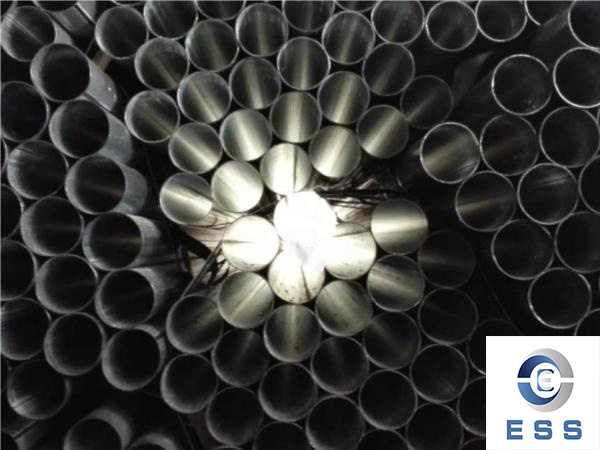Seamless carbon steel pipelines are widely utilized in industries that need the transportation of fluids and gases under high pressures and temperatures. These pipelines are made by piercing a strong billet of carbon steel, which is then warmed and extended to form a seamless tubular shape. The absence of welds in
seamless pipes gets rid of possible powerlessness, improving their strength and resistance to corrosion.
Seamless carbon steel pipes play an essential function in numerous industries, from energy to building, due to their strength, sturdiness, and flexibility. However, to ensure optimum performance and security, these pipes must fulfill stringent quality requirements. In this article, we will delve into the essential quality requirements for seamless carbon steel pipelines, going over the factors that affect their quality and the testing approaches utilized to guarantee compliance.

Chemical Composition
Among the basic quality requirements for seamless carbon steel pipelines is their chemical composition. The structure of the steel utilized in these pipelines greatly influences their mechanical homes, corrosion resistance, and overall efficiency. The primary elements in carbon steel pipelines consist of carbon, manganese, sulfur, phosphorus, silicon, and traces of other components.
1. Carbon Content
The carbon material in seamless carbon steel pipes determines their firmness, strength, and capability to be heat dealt with. Pipelines with greater carbon content are normally stronger however might be more prone to brittleness.
2. Manganese
Manganese enhances the pipe's strength and toughness while also aiding in deoxidation during the production procedure. It helps avoid the formation of damaging pollutants.
3. Sulfur and Phosphorus
These elements are thought about pollutants and need to be kept at low levels to prevent the formation of undesirable substances that can lower the pipe's strength and total quality.
4. Silicon
Silicon improves the pipe's resistance to oxidation and scaling at high temperatures. It also enhances the pipe's strength and assists keep its shape throughout production.
5. Evaluating Methods
Chemical structure is determined utilizing spectroscopic techniques, such as energy-dispersive X-ray spectroscopy (EDX) and optical emission spectroscopy (OES). These approaches evaluate the elemental composition of the steel and guarantee it fulfills the specific requirements.
Mechanical Properties
Seamless carbon steel pipes are subjected to a range of mechanical stresses throughout operation. As such, their mechanical homes are important for guaranteeing their reliability and safety.
1. Tensile Strength
Tensile strength determines the maximum amount of tensile load a pipe can hold up against without breaking. It is a vital specification that indicates the pipe's ability to stand up to pressure and other mechanical forces.
2. Yield Strength
Yield strength is the tension at which a product starts to display plastic contortion. It is a crucial indicator of the point at which a pipe will start to warp under load.
3. Elongation and Reduction of Area
These residential or commercial properties indicate the pipe's ability to warp before fracturing. Higher elongation and reduction of area values suggest better ductility and strength.
4. Hardness
Solidity identifies the pipe's resistance to indentation or abrasion. It is particularly crucial for applications in harsh environments.
5. Impact Durability
Impact durability measures the ability of the pipe to take in energy during unexpected loading or impact. It is important to guarantee the pipe can endure unanticipated external forces without failing catastrophically.
6. Evaluating Methods
Mechanical homes are figured out through stress, compression, and effect tests. These tests involve subjecting samples of the pipe product to regulated loads and determining their response. Common testing standards include ASTM A370 and ISO 6892 for tensile screening and ASTM E23 for effect screening.
Dimensional Accuracy
The dimensional precision of seamless carbon steel pipelines is a vital quality requirement, particularly for applications that require precise fitting and positioning. Discrepancies in measurements can result in leakage, lowered effectiveness, and even structural failures.
1. Outer Size
The external size of the pipe ought to be consistent along its length to guarantee compatibility with fittings and other elements.
2. Wall Density
The wall density directly affects the pipe's pressure-carrying capacity. Variations in wall density can compromise the pipe's integrity under high pressures.
3. Straightness
Seamless pipelines should exhibit minimal variance from straightness. Excessive curvature can prevent proper installation and trigger stress concentrations.
4. Length
Pipes ought to be made within defined length tolerances to ensure they can be easily connected and set up.
5. Testing Approaches
Dimensional precision is assessed utilizing measurement tools such as calipers, micrometers, and laser measurement systems. Pipelines are determined at different points to ensure they fulfill the defined tolerances laid out in industry requirements.
Surface area Quality
The surface quality of seamless carbon steel pipes is essential for preventing rust, guaranteeing appropriate sealing, and maintaining seamless fluid flow.
1. Complete
The pipe's surface area finish should be devoid of flaws such as cracks, pits, and scratches. A seamless finish reduces the likelihood of deterioration and makes the pipe simpler to clean up.
2. Oxide Scale
During manufacturing, pipes can develop oxide scales on their surface due to direct exposure to heats. These scales ought to be eliminated to prevent rust and ensure proper covering adhesion.
3. Cleanliness
Pipes should be devoid of contaminants like grease, oil, dirt, and rust, as these can compromise the pipe's performance and lead to early failure.
4. Checking Techniques
Visual examination, zoom tools, and surface profilometers are utilized to assess surface quality. These approaches help identify defects and irregularities on the pipe's surface area.













 Eastern Steel Manufacturing Co.,Ltd not only improve product production and sales services, but also provide additional value-added services. As long as you need, we can complete your specific needs together.
Eastern Steel Manufacturing Co.,Ltd not only improve product production and sales services, but also provide additional value-added services. As long as you need, we can complete your specific needs together.










